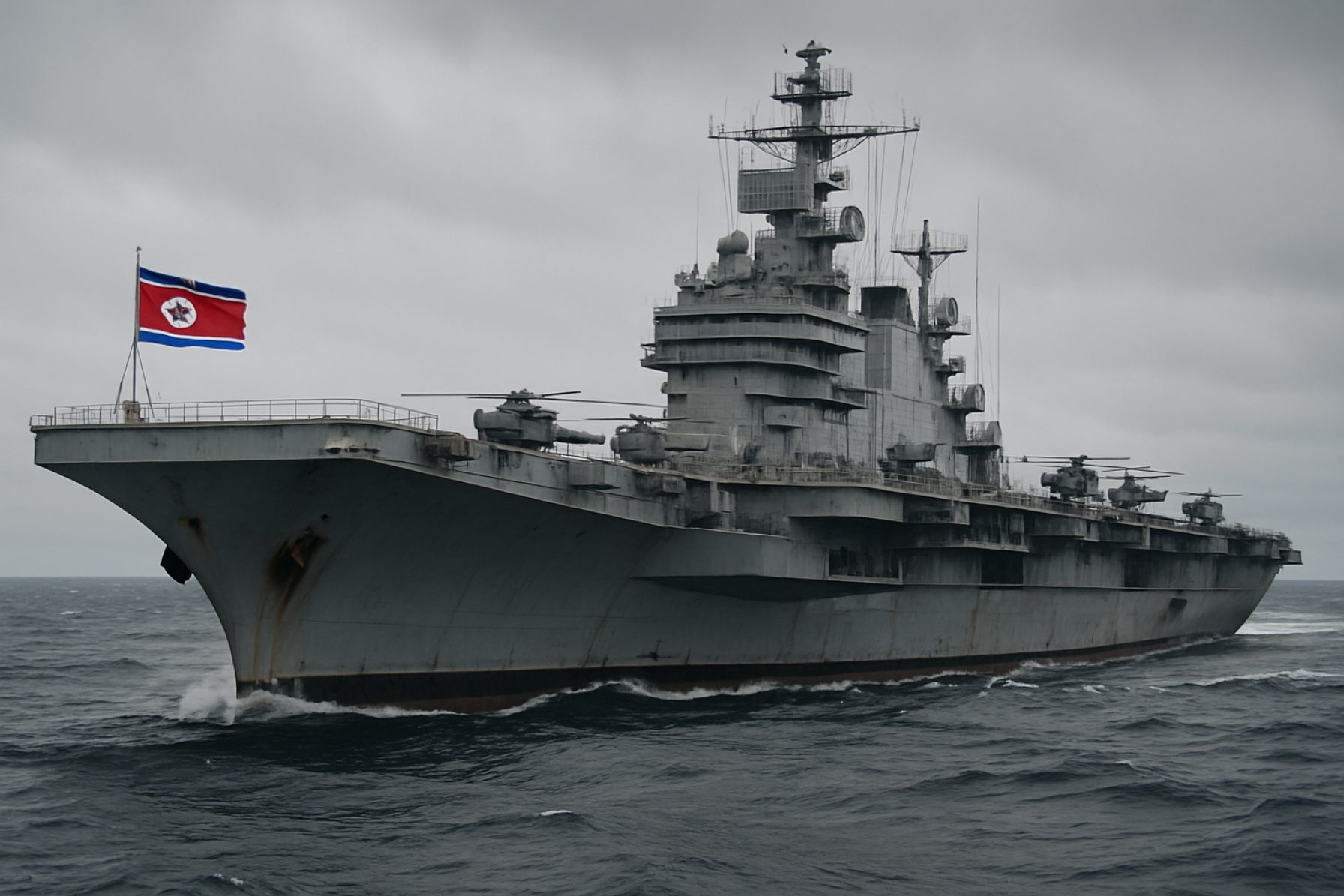Stunning Satellite Images Reveal North Korea’s Biggest Warship Ever—What It Means for 2025 Security
North Korea’s colossal new warship caught by satellites: Experts warn it could redefine security in Asia and spark new nuclear tensions.
- Length: 140 meters (459 feet)—twice the size of previous North Korean ships
- Missile Capacity: Up to 10 “strategic guided missiles”—likely nuclear-capable
- Class: 6,000–7,000 tons—largest in North Korean history
- Location Spotted: Nampo shipyard, west coast of North Korea
North Korea’s secretive military ambitions have lurched into the spotlight after powerful new satellite imagery revealed a warship of epic proportions docked at the Nampo shipyard near Pyongyang. Experts believe this is the most advanced and menacing maritime weapon in the country’s arsenal—a bold statement from Kim Jong Un, signalling that North Korea’s naval strategy is entering a new, more dangerous era.
This vessel, stretching an eye-popping 140 meters, instantly dwarfs anything previously seen from North Korea’s navy. Cutting-edge satellite intelligence from organizations like the Center for Strategic and International Studies (CSIS) confirms that this is the single largest naval development ever observed in the region.
But what does this shocking discovery mean for Asia—and the world—as we move deeper into 2025? Here’s everything you need to know.
Q: Why Does This Warship Matter for Global Security?
The freshly uncovered ship isn’t just for show. Military analysts stress that its sheer size signals a leap in capability. This platform could project North Korean power far beyond its shores—challenging the balance of power in the region.
The ship is rumored to carry up to 10 strategic guided missiles. With missile development still high on the regime’s agenda, the “strategic” descriptor hints strongly at nuclear capability—a chilling parallel to North Korea’s continued investment in long-range missile and nuclear programs.
Regional watchers across BBC and Reuters report that North Korea’s naval expansion is occurring in tandem with its land-based missile push, suggesting a truly multi-domain military strategy.
How Does This Fit Into Kim Jong Un’s Grand Strategy?
Kim Jong Un’s regime has accelerated military modernization since 2024, with satellite surveillance frequently picking up missile tests and submarine activity across the peninsula. Within months of unveiling a “nuclear-powered strategic guided missile submarine,” North Korea has now revealed its most powerful surface vessel ever.
The current doctrine: rapid modernization across air, land, sea, and undersea domains. The dual build-up of submarines and large surface vessels indicates a deliberate long-term plan—North Korea is seeking to join the ranks of nations with true blue-water navies.
Like China, which recently made headlines for its own enormous nuclear fusion center, North Korea wants global rivals to take notice of its technological prowess.
Q: Is North Korea’s Warship Really a Threat?
That’s the billion-dollar question. Some experts remain skeptical, noting that North Korea’s ships have historically lagged behind technologically. Many suspect that the warship may be an updated version of older Soviet-era designs, rather than a cutting-edge stealth vessel.
However, the new ship’s sheer firepower and size represent a real change. Even if defensive and electronic warfare capabilities are limited, its missile load—and the simple act of fielding such a ship—may alter strategic calculations for both the U.S. and North Korea’s neighbors.
Intelligence agencies, aided by increasingly sophisticated imaging satellites, will be watching to see if this warship launches, conducts missile tests, or serves as a new platform for surprise demonstrations.
How Do International Powers Monitor These Developments?
In the digital age, transparency is enforced from above. Modern observation satellites can track shipyard construction, missile movements, and even subtle changes in vessel design—giving the world unprecedented access to previously hidden military projects.
Just as new telescopes hunt for distant galaxies, advanced imaging is now a key tool in tracking North Korea’s ambitions. This tech-heavy surveillance is essential for policymakers to act swiftly and prevent dangerous miscalculations.
What Happens Next?—Regional Reactions & Global Risks
North Korea’s rapid advances have drawn wary glances from the United States, South Korea, and Japan. Analysts warn that such moves could trigger an arms race or provoke new rounds of military posturing in already volatile Northeast Asia.
With the specter of longer-range missiles, bigger ships, and potential nuclear payloads, the international community faces mounting pressure to adapt its own strategies and solidify surveillance capabilities.
Stay Ahead: What You Need to Know Now
- Watch for further North Korean missile and ship tests throughout 2025.
- Keep up with independent analyses and newly released satellite imagery for the latest developments.
- Engage with global policy conversations to understand possible diplomatic responses.
Don’t Wait—Share This Alert and Stay Informed!
Action Checklist:
- Sign up for breaking defense news from global sources.
- Follow satellite intelligence reports for real-time updates.
- Discuss regional security with experts and stay educated on evolving risks.
- Share this story with friends to spread awareness about critical global threats.
